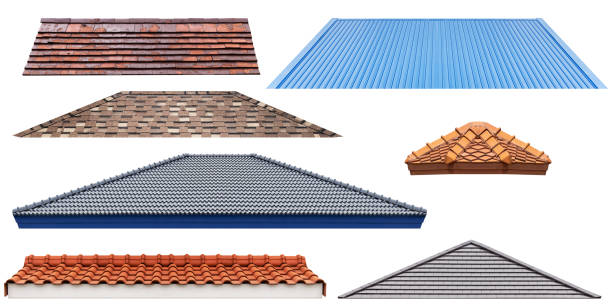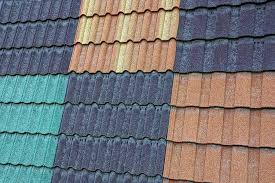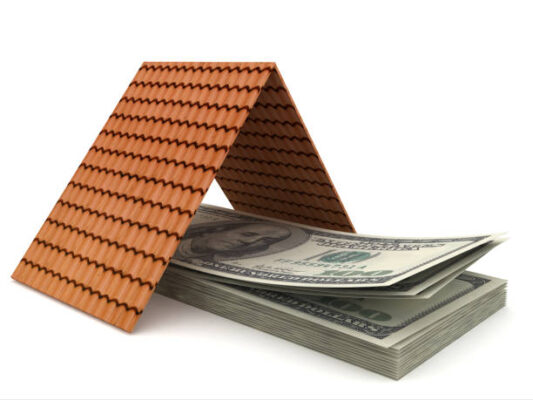The best material for a residential roof in Austin is standing-seam metal roof. But an alternative like asphalt shingles can be almost as strong and look nicer, depending on how it is installed. On the other hand, the worst material for residential roofs in Austin is cheap 3-tab asphalt. There are more factors at play and a bigger range of roof materials to choose from, which we’ll discuss in more detail shortly.
Austin’s skyline and neighborhoods, from the bungalows of Travis Heights to the hilltop estates of Tarrytown, have all sorts of roof materials, but what roofing material is actually the best fit for local weather, aesthetics, and budget?
With hot summers, occasional hailstorms, heavy rains during storm season, and strong UV exposure, picking the wrong roof can cost tens of thousands down the road.
Why is roof material important in Austin?
The type of roofing material is important in Austin since the area’s climate stresses roofs in three big ways: intense UV/heat, occasional severe thunderstorms (hail/wind), and heavy summer downpours that test drainage and flashing.
Too much heat wears out asphalt shingles faster and can make attic temperatures skyrocket if the roof isn’t reflective or ventilated. Hail and wind cause roof damage that’s often what creates a hefty bill for homeowners.
For people choosing neighborhoods to live in, keep in mind that roof longevity and local contractor availability both vary by area. So, what’s common in South Lamar might be rarer (and pricier) in Westlake or Tarrytown.
The Best roof materials for Austin homes
The top roof materials for houses in Austin are the ones that can survive hailstorms, look pretty, and protect the inside area from the sun’s heat. Currently, there are many options to choose from and many Austin roofing companies that provide reliable material sourcing and installation.
1. Best overall for longevity & energy savings: Standing-seam metal roofs
Metal roofing (especially standing-seam steel or aluminum with a good coating) combines a long lifespan (30–50 years or more with proper finish), high wind resistance, and strong heat resistance. While the initial cost is higher than asphalt, it tends to help with energy savings and has minimal maintenance. If you live in higher-end neighborhoods like Westlake Hills or Tarrytown and want longevity plus modern curb appeal, metal is a top pick. Project costs for large homes can become quite hefty, but homeowners are commonly happy with longevity and lower maintenance.
2. Best value for most homes: Architectural (laminated) asphalt shingles
Architectural shingles (also called dimensional shingles) are the workhorse across Austin’s single-family neighborhoods: Mueller, North Loop, South Congress. They’re cost-efficient, widely available, and quick to install. A full asphalt shingle replacement on a typical Texas roof (around 20 “squares”) often results in a more friendly budget compared to metal or tile.
For moderate budgets and conventional home styles, high-quality architectural shingles strike the best balance of cost, aesthetics, and expected lifespan (15–25 years depending on product and exposure).
3. Best for style & heat resistance: Concrete or clay tile
Tile roofs (clay or concrete) are common on Mediterranean or Spanish-style houses (South Austin, parts of Circle C). They resist heat pretty well and can last 50+ years, but they’re heavy and often require reinforced roof framing.
Tiles last for a long time and perform well against heat and high-UV sun rays; they also look extremely pretty. However, the upfront cost and structural requirements place tile toward the premium end. If you own a tile-style home in Barton Hills or Clarksville and your structure can support it, clay or concrete can add both longevity and resale cachet.
4. Best retrofit for hot attics: Cool roofing and reflective coatings
If your primary goal is to control attic temperatures (and your home has a roof that doesn’t need full replacement), reflective coatings and “cool roof” membranes are cost-effective. They work on metal and some asphalt roofs and are often positioned as energy-saving retrofits that can be paired with attic insulation upgrades.
The worst roof materials for Austin homes
1. Cheap 3-tab asphalt installed poorly
A thin, low-grade 3-tab shingle installed without proper underlayment, flashing, or ventilation can fail fast under Austin’s sun and storm cycles. Many cheaper scopes can actually make ventilation worse and use low-quality nails or underlayment, which leads to curling, granule loss, and early leaks. In short: cheap shingles plus poor installation = big issues. When shopping, compare warranty terms and insist on a licensed local Austin roofer with area experience.
2. Untreated wood shakes/shingles
Wood shakes and shingles have an attractive look but carry higher maintenance (and higher fire risk) in hot, dry seasons. They age poorly without strict maintenance and are often a poor fit for dense urban lots unless treated and carefully maintained.
3. DIY membrane installs on flat roofs without expertise
Flat or low-slope roofs need membranes (EPDM/TPO/PVC) installed with tight seams and good drainage. Bad DIY installs or inexperienced contractors create long-lasting leak points. For Austin condos or garages with flat roofs, always choose experienced flat-roof contractors who can do a roof inspection and build a safe project for you.
How much are roof materials costing in Austin, TX?
Expect wide variance: different homes can get quotes anywhere from roughly $13,000–$16,000 for larger shingle roofs to much higher for metal or tile on complex roofs. In some cases, depending on roof size and home area, full roof replacements can fall in the low five-figures and higher when using premium materials.
State and local estimate guides place typical asphalt replacements for average Texas roofs in the lower-end range ($6k–$9k for smaller/simple roofs), while high-end metal or tile jobs commonly reach $14k–$25k depending on size and complexity.
Remodeling/industry reports put many mid-range Texas mid-sized projects around $20k as a realistic planning figure. Always request itemized quotes and check for line items like tear-off, underlayment, flashing, and permit fees.
The top roof materials in Austin, based on neighborhood examples
- Travis Heights / South Congress: Popular for bungalows and modernized cottages; architectural shingles and metal accents are common. Asphalt is budget-friendly here, but if you’re flipping a renovated bungalow, metal accents on a porch or bay can bump curb appeal.
- Tarrytown / Westlake: Larger properties, often with steeper budgets. Homeowners favor aesthetic longevity; metal or higher-end tile is more common here.
- Mueller / North Loop: This area is growing with new construction projects; it’s also going through HOA guidelines; architectural shingles or engineered composite materials usually checkmark style rules and budget goals.
How to choose your roof material in Austin, TX
- Match material to budget and expected tenure: Plan 10–30+ years ahead.
- Consider climate performance: Metal and tile beat cheap asphalt on heat and wind resistance.
- Inspect roof structure: Older homes may need reinforcement for tile.
- Get at least three itemized local bids: Include tear-off, underlayment, ventilation, flashing, and permit costs.
- Check warranties and insurance implications: Some insurers might give you a harder headache if you use specific materials; it’s a good idea to record all roof storm damage when it happens.
Final takeaways
- For most Austin homes, architectural asphalt shingles deliver the best mix of cost, availability, and curb appeal.
- For the absolute best performance, protection, and long-term energy savings, standing-seam metal is the smartest long-term buy in many parts of Austin.
- Tile is beautiful and durable, but comes with structural costs.
Steer clear of the cheapest shingle installations, untreated wood shakes, or unskilled flat-roof DIY work since they create expensive problems fast.





